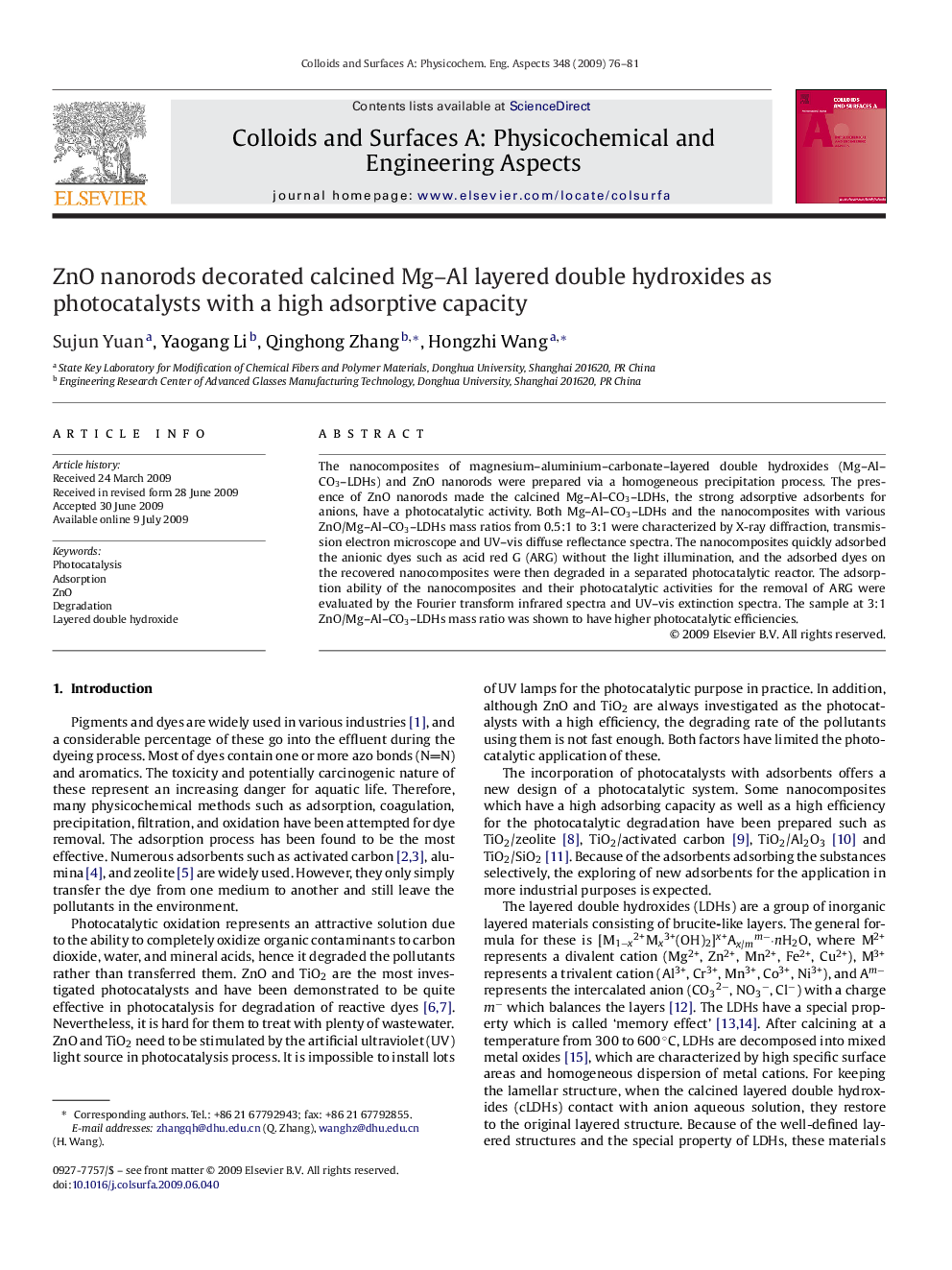| Article ID | Journal | Published Year | Pages | File Type |
|---|---|---|---|---|
| 595750 | Colloids and Surfaces A: Physicochemical and Engineering Aspects | 2009 | 6 Pages |
The nanocomposites of magnesium–aluminium–carbonate–layered double hydroxides (Mg–Al–CO3–LDHs) and ZnO nanorods were prepared via a homogeneous precipitation process. The presence of ZnO nanorods made the calcined Mg–Al–CO3–LDHs, the strong adsorptive adsorbents for anions, have a photocatalytic activity. Both Mg–Al–CO3–LDHs and the nanocomposites with various ZnO/Mg–Al–CO3–LDHs mass ratios from 0.5:1 to 3:1 were characterized by X-ray diffraction, transmission electron microscope and UV–vis diffuse reflectance spectra. The nanocomposites quickly adsorbed the anionic dyes such as acid red G (ARG) without the light illumination, and the adsorbed dyes on the recovered nanocomposites were then degraded in a separated photocatalytic reactor. The adsorption ability of the nanocomposites and their photocatalytic activities for the removal of ARG were evaluated by the Fourier transform infrared spectra and UV–vis extinction spectra. The sample at 3:1 ZnO/Mg–Al–CO3–LDHs mass ratio was shown to have higher photocatalytic efficiencies.
